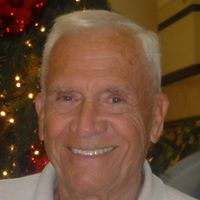Joseph C Ippolito
age ~38
from Minneapolis, MN
- Also known as:
-
- Joe Ippolito
- Josep Hippolito
Joseph Ippolito Phones & Addresses
- Minneapolis, MN
- 774 Randy Ave, Saint Paul, MN 55126
- Shoreview, MN
- Purcellville, VA
- Dallas, TX
- Austin, TX
- Haymarket, VA
- Fairfax Sta, VA
Education
-
School / High School:Rutgers
Ranks
-
Licence:New York - Delinquent
-
Date:1981
Specialities
Buyer's Agent • Listing Agent
Lawyers & Attorneys
Isbn (Books And Publications)

License Records
Joseph J Ippolito
License #:
052723 - Active
Category:
Real Estate
Type:
Salesperson
Joseph J Ippolito
License #:
052723 - Active
Category:
Real Estate
Type:
Salesperson
Name / Title
Company / Classification
Phones & Addresses
Manager
Td Ameritrade Clearing, Inc
Security Broker/Dealer
Security Broker/Dealer
733 Marquet, Minneapolis, MN 55402
(612)3418701
(612)3418701
STRATEGIC THINKING PARTNERS, INC
Us Patents
-
Radio Frequency Isolation Card
view source -
US Patent:6515633, Feb 4, 2003
-
Filed:Nov 15, 2001
-
Appl. No.:09/999264
-
Inventors:Joseph R. Ippolito - Flower Mound TX
-
Assignee:EMS Technologies, Inc. - Norcross GA
-
International Classification:H01Q 928
-
US Classification:343797, 343795
-
Abstract:One or more feedback elements generate a feedback signal in response to a transmitted signal outputted by each radiator of the antenna system. This feedback signal is received by each radiator, also described as a radiating element, and combined with any leakage signal present at the port of the antenna. Because the feedback signal and the leakage signal are set to the same frequency and are approximately 180 degrees out of phase, this signal summing operation serves to cancel both signals at the output port, thereby improving the port-to-port isolation characteristic of the antenna. Each feedback element can include a photo-etched planar metal strip supported by a planar dielectric card made from printed circuit board material. Such feedback elements can provide a high degree of repeatability and reliability in that the manufacturing of such feedback elements can be precisely controlled.
-
Rf Card With Conductive Strip
view source -
US Patent:6933905, Aug 23, 2005
-
Filed:Dec 18, 2002
-
Appl. No.:10/322843
-
Inventors:Joseph R. Ippolito - Flower Mound TX, US
-
Assignee:EMS Technologies, Inc. - Norcross GA
-
International Classification:H01Q009/28
H01Q021/26 -
US Classification:343797, 343795
-
Abstract:One or more feedback elements generate a feedback signal in response to a transmitted signal outputted by each radiator of the antenna system. This feedback signal is received by each radiator, also described as a radiating element, and combined with any leakage signal present at the port of the antenna. Because the feedback signal and the leakage signal are set to the same frequency and are approximately 180 degrees out of phase, this signal summing operation serves to cancel both signals at the output port, thereby improving the port-to-port isolation characteristic of the antenna. Each feedback element can include a photo-etched planar metal strip supported by a planar dielectric card made from printed circuit board material. Such feedback elements can provide a high degree of repeatability and reliability in that the manufacturing of such feedback elements can be precisely controlled.
-
Charge Balanced Cardiac Pacing From High Voltage Circuitry Of An Extra-Cardiovascular Implantable Cardioverter Defibrillator System
view source -
US Patent:20230075919, Mar 9, 2023
-
Filed:Oct 27, 2022
-
Appl. No.:18/050462
-
Inventors:- Minneapolis MN, US
Paul D. BAKER - Oakdale MN, US
Lonny V. CABELKA - San Clemente CA, US
Craig W. DORMA - Albertville MN, US
Timothy A. EBELING - Circle Pines MN, US
Michael W. HEINKS - New Brighton MN, US
James VANDER HEYDEN - Maplewood MN, US
Joseph IPPOLITO - Minneapolis MN, US
Joel R. LAUER - Clearwater MN, US
Robert T. SAWCHUK - Roseville MN, US
Brian W. SCHOUSEK - Houlton WI, US -
International Classification:A61N 1/39
A61N 1/05
A61N 1/365 -
Abstract:An extra-cardiovascular implantable cardioverter defibrillator (ICD) having a high voltage therapy module is configured to control a high voltage charging circuit to charge a capacitor to a pacing voltage amplitude to deliver charge balanced pacing pulses. The capacitor is chargeable to a shock voltage amplitude that is greater than the pacing voltage amplitude. The ICD is configured to enable switching circuitry of the high voltage therapy module to discharge the capacitor to deliver a first pulse having a first polarity and a leading voltage amplitude corresponding to the pacing voltage amplitude for pacing the patient's heart via a pacing electrode vector selected from extra-cardiovascular electrodes. The high voltage therapy module delivers a second pulse after the first pulse. The second pulse has a second polarity opposite the first polarity and balances the electrical charge delivered during the first pulse.
-
Carrying Case For Controller Of Patients With Vads
view source -
US Patent:20210393945, Dec 23, 2021
-
Filed:Jun 7, 2021
-
Appl. No.:17/340498
-
Inventors:- Minneapolis MN, US
Lance I. Farb - Miami FL, US
Gerald M. Herman - Fridley MN, US
Nicholas S. Difranco - New York NY, US
Joseph Ippolito - Shoreview MN, US
Timothy Hillukka - Rogers MN, US -
International Classification:A61M 60/855
-
Abstract:A carrying case for a controller for an implantable blood pump includes a first flexible pouch sized and configured to retain the controller. The pouch has a first face and a second face opposite the first face, the first face includes a thermal insulating material and the second face including a thermal dissipating material.
-
Notification System For Low-Level Preventative Lvad Alerts
view source -
US Patent:20210390841, Dec 16, 2021
-
Filed:Mar 4, 2021
-
Appl. No.:17/192028
-
Inventors:- Miami Lakes FL, US
Joseph Ippolito - Shoreview MN, US -
International Classification:G08B 21/24
G08B 7/06
A61M 60/508
A61M 60/17 -
Abstract:A controller for an implantable blood pump including processing circuitry in communication with the implantable blood pump and configured to generate at least one preventative alert
-
Sealed Acoustic Speaker And Medical Device Including Same
view source -
US Patent:20200204890, Jun 25, 2020
-
Filed:Dec 19, 2019
-
Appl. No.:16/721003
-
Inventors:- Mounds View MN, US
Joseph Ippolito - Shoreview MN, US
Matthew Saterbak - Robbinsdale MN, US
Luke T. Babler - Minneapolis MN, US
Thai Nguyen - Minneapolis MN, US -
International Classification:H04R 1/02
-
Abstract:Various embodiments of a speaker and a method of forming such speaker are disclosed. The speaker includes a frame having a first major surface, a second major surface, and an opening disposed between the first and second major surfaces; a cone disposed adjacent the first major surface of the frame; and an adhesive layer disposed on at least a portion of the second major surface of the frame. The adhesive layer occludes the opening of the frame.
-
Charge Balanced Cardiac Pacing From High Voltage Circuitry Of An Extra-Cardiovascular Implantable Cardioverter Defibrillator System
view source -
US Patent:20180221677, Aug 9, 2018
-
Filed:Feb 6, 2017
-
Appl. No.:15/425169
-
Inventors:- Minneapolis MN, US
Paul D. BAKER - Oakdale MN, US
Lonny V. CABELKA - San Clemente CA, US
Craig W. DORMA - Albertville MN, US
Timothy A. EBELING - Circle Pines MN, US
Michael W. HEINKS - New Brighton MN, US
James VANDER HEYDEN - Maplewood MN, US
Joseph IPPOLITO - Minneapolis MN, US
Joel R. LAUER - Clearwater MN, US
Robert W. SAWCHUK - Roseville MN, US
Brian W. SCHOUSEK - Houlton WI, US -
International Classification:A61N 1/39
A61N 1/05
A61N 1/365 -
Abstract:An extra-cardiovascular implantable cardioverter defibrillator (ICD) having a high voltage therapy module is configured to control a high voltage charging circuit to charge a capacitor to a pacing voltage amplitude to deliver charge balanced pacing pulses. The capacitor is chargeable to a shock voltage amplitude that is greater than the pacing voltage amplitude. The ICD is configured to enable switching circuitry of the high voltage therapy module to discharge the capacitor to deliver a first pulse having a first polarity and a leading voltage amplitude corresponding to the pacing voltage amplitude for pacing the patient's heart via a pacing electrode vector selected from extra-cardiovascular electrodes. The high voltage therapy module delivers a second pulse after the first pulse. The second pulse has a second polarity opposite the first polarity and balances the electrical charge delivered during the first pulse.
Medicine Doctors

Joseph Richard Ippolito
view sourceSpecialties:
Family Medicine
Addiction Medicine
Addiction Medicine
Education:
American University of the Caribbean (1981)

Joseph William Ippolito
view sourceSpecialties:
Family Medicine
Education:
Creighton University (1990)
Resumes

Principal Systems Engineer
view sourceLocation:
Minneapolis, MN
Industry:
Biotechnology
Work:
University of Minnesota Aug 2009 - Dec 2014
Grad Student
Medtronic Aug 2009 - Dec 2014
Principal Systems Engineer
Grad Student
Medtronic Aug 2009 - Dec 2014
Principal Systems Engineer
Education:
The University of Minnesota 2012 - 2014
Master of Science, Masters, Biomedical Engineering
Master of Science, Masters, Biomedical Engineering
Skills:
Biomedical Engineering
Animal Models
Stem Cells
Cell
Electrophysiology
Animal Models
Stem Cells
Cell
Electrophysiology
Interests:
Electronics
3D Printing
Biomedical Technologies
I Have A Flashforge Dreamer
Engineering
Classic Cars
3D Printing
Biomedical Technologies
I Have A Flashforge Dreamer
Engineering
Classic Cars

Joseph Ippolito
view source
Joseph Ippolito
view source
Joseph Ippolito
view source
Joseph Ippolito
view sourceIndustry:
Military

Joseph Ippolito
view sourceLocation:
United States
Plaxo

Joseph Ippolito
view sourceVerizon
Classmates

Joseph Ippolito
view sourceSchools:
Bourbonais High School Bourbonnais IL 2001-2005
Community:
Don Sommer, Cathy Nelson, Robert Edwards

Joseph Ippolito
view sourceSchools:
Lasalle Military Academy Oakdale NY 1978-1982
Community:
Garrison Gross, Thomas Giamboi, Tom Casey

Joseph Ippolito
view sourceSchools:
Brooklyn Technical High School Brooklyn NY 1966-1970
Community:
Sue Schoenfeld, Leon Klein, Richard Levine, Linda Berkeley, Mike Meachem, Stuart Namm

Joseph Ippolito
view sourceSchools:
East Dover Elementary School Toms River NJ 1981-1985
Community:
Linda Deeck, Michael Magovern, Heather Moyer, Christine Burset, Tama Pozenges

Joseph Ippolito
view sourceSchools:
Paterson City Elementary School 5 Paterson NJ 1971-1979
Community:
Marjorie Lopez, Annette Galindo, Kevin Kelley, Eric Franklin

Joseph Ippolito | Queen o...
view source
Joseph Ippolito | Indepen...
view source
Joe Ippolito | Narraguagu...
view source
Joseph Ippolito
view source
Joseph Ippolito
view source
Joseph Ippolito
view source
Joseph Ippolito
view source
Joseph J. Ippolito
view source
Joseph Peter Ippolito
view source
Joseph Ippolito
view source
Joseph Ippolito
view sourceMyspace
Youtube
Googleplus

Joseph Ippolito
Work:
Hill Phoenix - Tech (2007)
Relationship:
Married

Joseph Ippolito

Joseph Ippolito

Joseph Ippolito

Joseph Ippolito

Joseph Ippolito

Joseph Ippolito

Joseph Ippolito
Get Report for Joseph C Ippolito from Minneapolis, MN, age ~38









